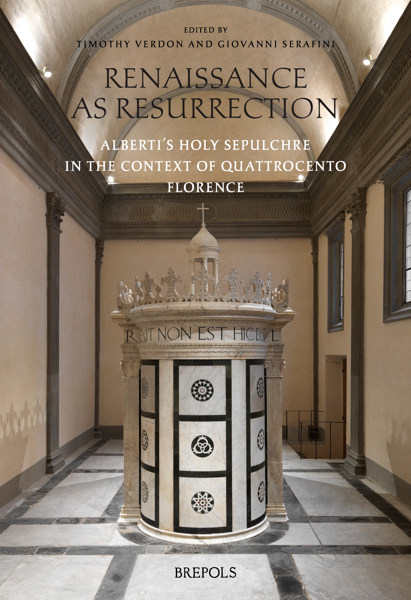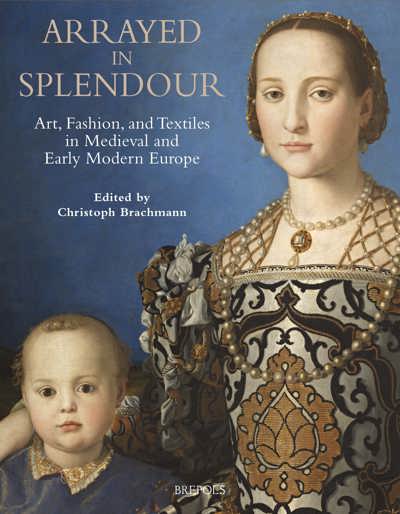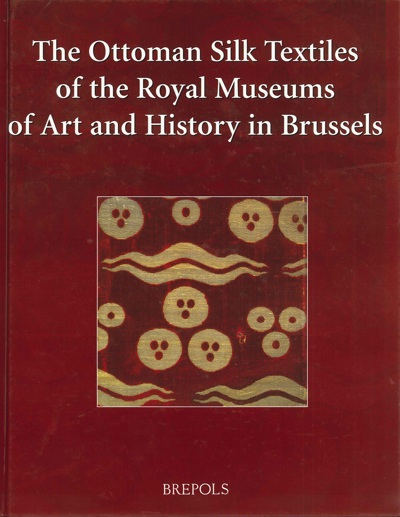
Renaissance as Resurrection
Alberti’s Holy Sepulchre in the Context of Quattrocento Florence
Timothy Verdon, Giovanni Serafini (eds)
- Pages: iv + 264 p.
- Size:180 x 265 mm
- Illustrations:22 b/w, 136 col.
- Language(s):English
- Publication Year:2026
- € 125,00 EXCL. VAT RETAIL PRICE
- ISBN: 978-2-503-61351-2
- Hardback
- Forthcoming (Jan/26)
*How to pre-order?
Director of the Museo dell’Opera dell Duomo, Florence, Monsignor Timothy Verdon, a Canon of the city’s cathedral, Santa Maria del Fiore, is also Director of the Office of Sacred Art of the Florentine Archdiocese and former Consultor of the Vatican Commission of Church Heritage. Author of numerous books and articles on Christian art, Verdon, who has a Ph.D. in art history from Yale University and has been a Fellow of the Harvard University Center for Italian Renaissance Studies, Villa I Tatti (Florence), is Robert and Katherine Burke Instructor in Art History at Stanford University’s Bing Center in Florence, Italy. Verdon, who has organized major exhibitions at Turin, Washington, D. C., Seoul and New York City, furnished the installation project of the Museo dell’Opera del Duomo, enlarged and entirely renovated in 2012–2015.
Giovanni Serafini (Florence, 1983) is an art historian who lives and works in Florence. His area of specialization is sacred iconology in Tuscan art from the 13th to the 17th century, with a preference for the Florentine Quattrocento and Seicento. He is the author of monographic books, scientific articles, essays, and curator of catalogues; he has extensive experience as a lecturer, curator, and director of exhibitions. He has organized several international conferences on art history and theology and has taught courses at the University of Florence and other specialized training schools in Florence, focusing on the Renaissance and Florentine Baroque. Since 2017, he has been employed at the Opera di Santa Maria del Fiore.
The Italian Renaissance has been studied above all as a cultural phenomenon related to the 15th-century rediscovery of ancient philosophy, literature, and art. The present volume significantly recalibrates that view, looking at the humanist concept of ‘rebirth’ in relation to the Christian belief in resurrection. Many of the articles deal specifically with the most explicit expression of this ideal equation, Leon Battista Alberti’s evocation of Christ’s Sepulchre in the Florentine church of San Pancrazio, a masterpiece in which the ‘new life’ given to classical architecture, becomes a visual metaphor for the Easter event. This association of ideas, operative in numerous other Florentine works, offers modern students a hermeneutical key reflective of 15th-century church history.
Foreword, Timothy Verdon
Imago mysterii: The Visual Polysemy of Alberti’s Holy Sepulchre
Introduction
Introduction, Timothy Verdon
Alberti’s Holy Sepulchre in Quattrocento Florence
Introduction, Vincenzo Vaccaro
The Chapel of the Holy Sepulchre in Florence: Restoration History and Rebirth
Part I: The Sepulchre and its Meaning
Elena Bastianini, A Virtual Reconstruction of San Pancrazio in Alberti’s Time
Anke Naujokat, Leon Battista Alberti’s Holy Sepulchre Tempietto as a Syncretistic Monument: Religious Readings of its Architecture and Decoration
Ettore Rocca, Not Here Yet Nowhere Else But Here. Leon Battista Alberti’s Holy Sepulchre in the Light of Nicholas of Cusa
Elena Bastianini, Signifying Eternal Renascence: The Marble Inlay of Alberti’s Holy Sepulchre
Part II: Ecclesial Coordinates
Martin Shannon, CJ, Yearn for Everlasting Life: Death and Resurrection in Monastic Spirituality
Cristina Acidini, Visual Pilgrimages. Holy Land Sites and Devotional Memory
Davide Baldi Bellini, The Council of Florence and the Holy Land Sites in Jerusalem
Elena Gurrieri, The Christian Humanist Pilgrim: Marco Rustici’s Ideal Journey to the Holy Sepulchre
Roberto Gulino, The Sepulchre and the Celebration of Easter: In Florence as in Jerusalem?
Part III: Christian Humanist Parallels
Gianni Cioli and Agnese Maria Fortuna, The Novelty of Ancient Forms: The Case of Masaccio’s ‘Trinity’
Lorenzo Gnocchi, Cosimo the Elder’s ‘monumentum apertum’ at San Lorenzo
Giovanni Serafini, 15th-Century Aedicules, Tabernacles, Sacella. Antiquity Reborn in Contexts of Faith
Angelo Pellegrini, Renascence and resurrexio. Alberti’s Sepulchre in Renaissance Context
Part IV: Contemporary Responses
Timothy Verdon, Fons Vitae. Works by Peter Brandes, Maialisa Engelhardt, Susan Kanaga, Filippo Rossi
Plates




